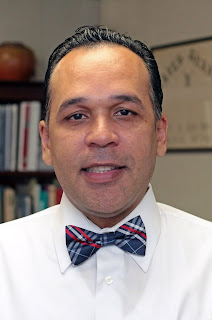Two faculty members from the College of Education recently published books.

 Beyond the Classroom Walls: Developing Mindful Home, School, and Community Partnerships by Tom Starmack (at left) and Michael Patte (right), professors of Teaching and Learning, pushes students to look beyond the walls of the classroom to explore all avenues of educating students, including families, community and other school resources. The book features recent scholarly articles to support the concepts of each chapter. Included are notes to instructors for the means of creating authentic and engaging assignments and means of delivering instruction.
Beyond the Classroom Walls: Developing Mindful Home, School, and Community Partnerships by Tom Starmack (at left) and Michael Patte (right), professors of Teaching and Learning, pushes students to look beyond the walls of the classroom to explore all avenues of educating students, including families, community and other school resources. The book features recent scholarly articles to support the concepts of each chapter. Included are notes to instructors for the means of creating authentic and engaging assignments and means of delivering instruction.
Starmack also wrote and edited Organizational Behavior: A New Three Dimensional Leadership Paradigm, which explores various types of leadership and major concepts critical to leading in the 21st century. The book has a PK-16 target audience for students or professionals seeking to learn more and be engaged in learning about effective leadership in our complex world. The impact on pre-service and in-service teachers is the depth with which students engage with content and apply concepts in their current setting through job-embedded assignments. Mindy Andino, assistant professor of Teaching and Learning, wrote case studies that are included in the book.

 Beyond the Classroom Walls: Developing Mindful Home, School, and Community Partnerships by Tom Starmack (at left) and Michael Patte (right), professors of Teaching and Learning, pushes students to look beyond the walls of the classroom to explore all avenues of educating students, including families, community and other school resources. The book features recent scholarly articles to support the concepts of each chapter. Included are notes to instructors for the means of creating authentic and engaging assignments and means of delivering instruction.
Beyond the Classroom Walls: Developing Mindful Home, School, and Community Partnerships by Tom Starmack (at left) and Michael Patte (right), professors of Teaching and Learning, pushes students to look beyond the walls of the classroom to explore all avenues of educating students, including families, community and other school resources. The book features recent scholarly articles to support the concepts of each chapter. Included are notes to instructors for the means of creating authentic and engaging assignments and means of delivering instruction.Starmack also wrote and edited Organizational Behavior: A New Three Dimensional Leadership Paradigm, which explores various types of leadership and major concepts critical to leading in the 21st century. The book has a PK-16 target audience for students or professionals seeking to learn more and be engaged in learning about effective leadership in our complex world. The impact on pre-service and in-service teachers is the depth with which students engage with content and apply concepts in their current setting through job-embedded assignments. Mindy Andino, assistant professor of Teaching and Learning, wrote case studies that are included in the book.

